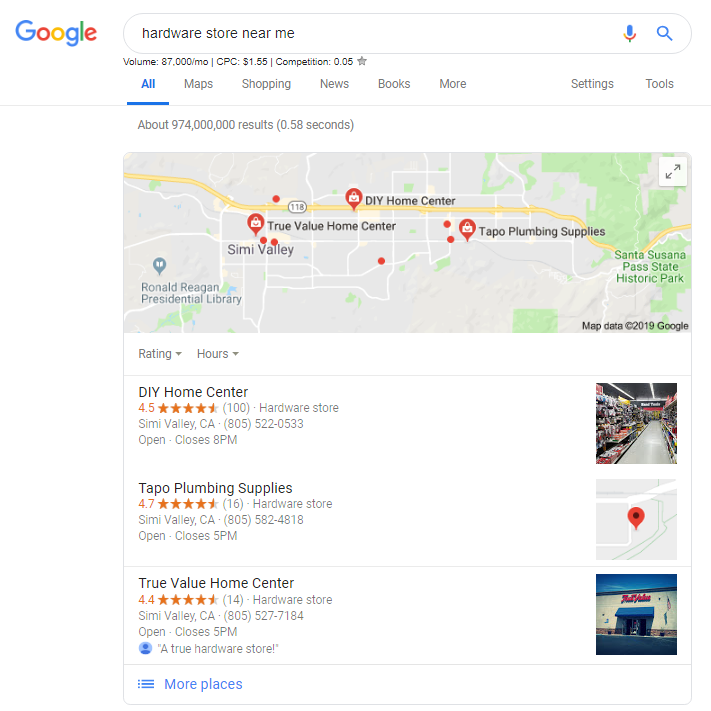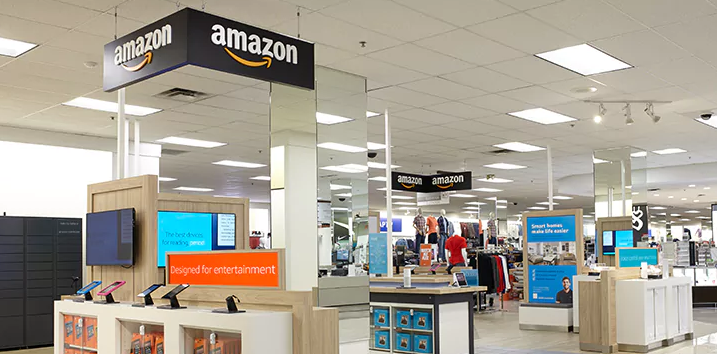Every retail store is competing to get more customers in the door.
Whether you have one store or one thousand, the goal is the same — get more people coming in.
If you are a store manager or district managers, you would be correct to worry about the changing trend in consumer behavior. More people are shopping online — and that’s growing every year.
However, studies have shown that people still like in-store experiences — but they must have a good reason to.
Some things you just have to experience in the store
Last week, I ordered supplies from Costco.com for the first time. Instead of leaving my house, it took me about 20 minutes to complete my order.
2 hours later, everything I ordered arrived at my doorstep — super convenient! I wasn’t as excited I thought I was going to be.
Here’s the thing, I actually did miss going to Costco — because it took the family tradition away from us.
Of course, battling the crowd at Costco is not for everyone — but for us, it was what we enjoyed doing every two weeks.
Buying a Pedego electric bike
A brand that caught my attention with their spokesperson is Pedego Electric Bikes.

These bikes range from $2,000 to $5,000 per piece — a significant outlay of money.
Their demographic are people in the age range of 45-65 who want to exercise but with a little help when needed from the electric motor.
Before spending considerable amount of money, their customers want to touch and feel and try it out before purchasing.
They have franchise owned and operated stores across the country — for just that exact reason.
Getting to touch the bike and test it is a key factor for customers to buy. When customers are in the store, they can learn more about the quality of the bike and have all their questions asked — then have peace of mind to buy.
Pedego store franchise owners understand the value of getting more customers into their store.
The more customers they get to come in to the store, the more bikes they will sell — it’s a numbers game.
Using a combination of direct and indirect traffic drivers — local store owners can help customers discover their business.
Here’s a list of marketing ideas stores can use to attract more foot traffic
Setting up charging stations
Let your customers charge up in your store. One of your objective is to keep your customers in the store for as long as possible — allow them to shop without having to worry about their smartphones — yes this is a real concern.
People will leave stores because their phones are running out of juice — whether we like it or not, our lives are dictated by our phones these days.
Setting up charging stations lets your customers stay in your store to finish up their shopping at ease.
Additionally, offering free Wi-Fi inside your store is a great way to build your email marketing list.
It is common for customers to submit their email and register to gain access to your free Wi-Fi.
Starbucks is a great example of a brand that adopted this strategy to keep their customers in their stores longer — hoping for multiple purchases while customers charge their phones.
Completing your local store information on search platforms
Local business listings is customers search on sites like Google.
An increasing search phrase includes “near me” — and that can help you drive more people into your store.
When searching for a “hardware store near me,” I found a local store called DIY Home Center. I was curious enough to go into the store — and ended up loving it so much it’s now my go-to store!
Why?
Not because they are merely local. But they have the right prices, amazing customer service, and their staff is knowledgeable.

If you are a retail business with stores in more than one location, make sure your store locations are verified and listed in Google My Business so you can show up on Google Maps for local results.
There are other local search platforms like Yelp!, Bing Local, etc. Maintain your listing so you can be relevant to local customer searches.
Hydrate your customers
This one comes right out of the customer service play book. Don’t believe me?

What do they offer you when you check into your hotel room? Water.
What do Uber and Lyft drivers started offering you? Water.
What does your favorite spa offer you? Water.
What do they give you at the car dealerships? Water! (That’s probably because they expect you to negotiate! LOL)
What should you offer your customers? Yes!!! Water!
We are a pet-loving country. So if you want to go one step further, having a water bowl of your customers dogs can go a long way.
Of course, that’s not something you might think about right away. But these little gestures create a good experience when customers walk through your doors.
It shows that you care about your customers beyond just the shopping.
Host an in-store event
Events draw people in to your stores. It’s fun and engaging.
Retailers like Harbor Freight Tools has great opportunities to host localized in-store events across the country.
I’m not talking about the boring displays like they have at the other guys — Home Depot or Lowe’s — no sirree. Although those guys do have workshops once in a while — those are decent 🙂
I’m talking about events that demonstrate some of the popular hardware products — power tools, generators, etc.
Showing how a tool works in real life gives a chance for your store to show the customers what they can expect before buying.
Drive more with loyalty programs
I am a huge fan of loyalty programs — it gives me such joy to know that I can earn freebies or get perks from brands I spend my money on.
You can make loyalty into a fun activity for your customers — rewarding them for both in-store and online activities.
There are many ways you can create your loyalty strategy:
- omni-channel
- social and behavior
- incentives
- paid memberships
For example, Harbor Freight Tools can offer its customers points for people checking-in at their stores, offer a gift to customers who have high frequency of purchases, a discount to customers, etc.
With a loyalty program, you will improve your customers in-store experience, builds rapport with your store team, and ensures your customers return more frequently.
When it comes to rewarding your customers, I believe there shouldn’t be any limits to put a smile on their faces.
Buy online, pickup in-store
I’m sure most customers are no stranger to placing an order online and picking it up at the store on their way home from work.
This strategy is no longer as counter-intuitive as when it was first introduced years ago.
This omni-channel approach can successfully bring your customers into the store and spend more when they are in-store.
When the customer is in the store, you have another opportunity to engage them and they because more valuable customers.
I recall my first experience with ordering online at bestbuy.com and picking my laptop when I got to the store. It was a pleasant experience — especially when my time is precious.
That took me less than 10 minutes and I was on my way.
On the other hand, this would have taken me at least 30 minutes if I did it the old fashion way.
Before B.O.P.I.S., I had to walk into the store, go pick out my laptop from the tech department, wait for the store employee to get one for me, then pay for it, and then finally walk out of the store, into my car and drive off.
Returns and exchanges in the store
Amazon realizes the importance of a full customer cycle when they partnered with Kohl’s to accept returns in store for credit.
This may have never crossed anyone’s mind to be feasible — but retailers like Amazon understand their customers’ pain points.

Buying something online and having to mail a wrong order back is a pain — for anyone who have experienced this.
It is inconvenient. It’s a friction point for many shoppers.
By removing the friction for your customers’ online orders will bring them into your stores to engage and have a good experience with your store team.
Conclusion
To say retail store business is dead is naive.
Contrary to popular belief, businesses that shut their doors is not entirely due to Amazon’s increasing dominance.
It is, in part, due to the stores inability to adapt and transform their digital business to work cohesively with their brick-and-mortar operations.
You need to consider your customers’ entire journey — online and offline — and bring those experiences under one cohesive customer strategy.
It’s no longer and online or offline tug-o-war. Businesses cannot afford to favor one over the other anymore if they want to thrive in as a brand.
Let your customers’ experience and desires guide your overall in-store strategy. Pay attention to their experiences. The reviews matter. The social feedback is a data goldmine.
This is what the future of retail is becoming, whether you like it or not.



